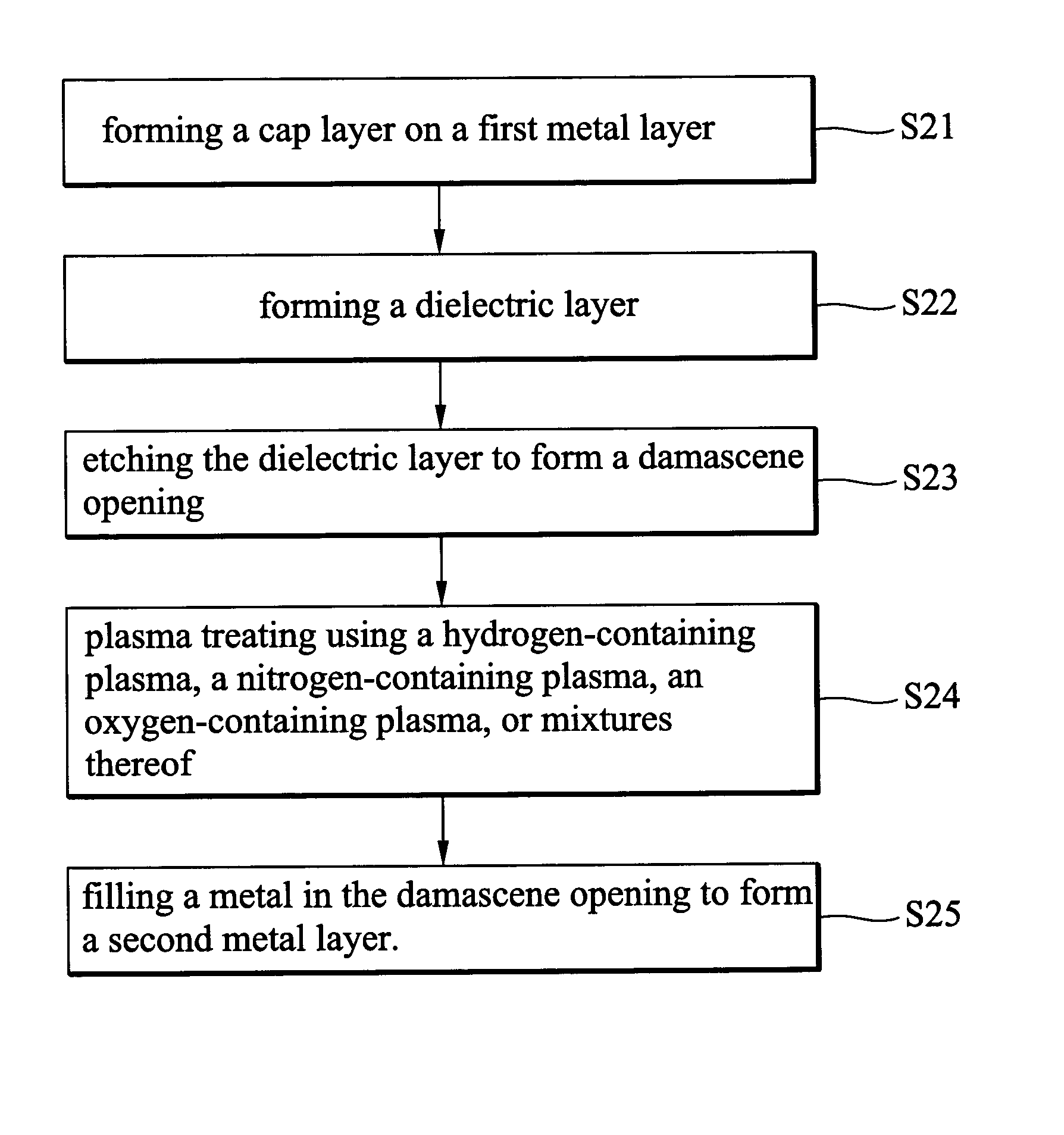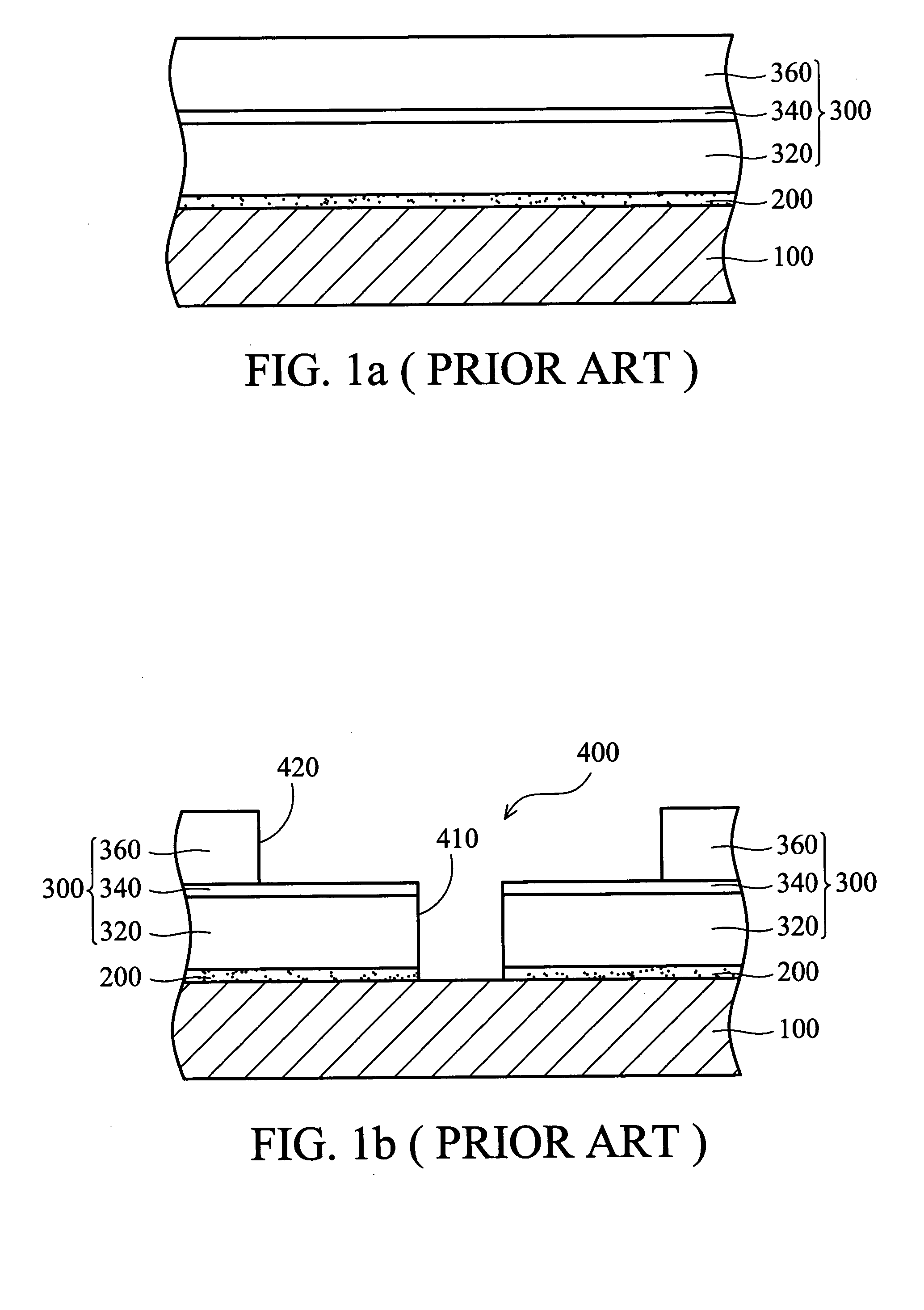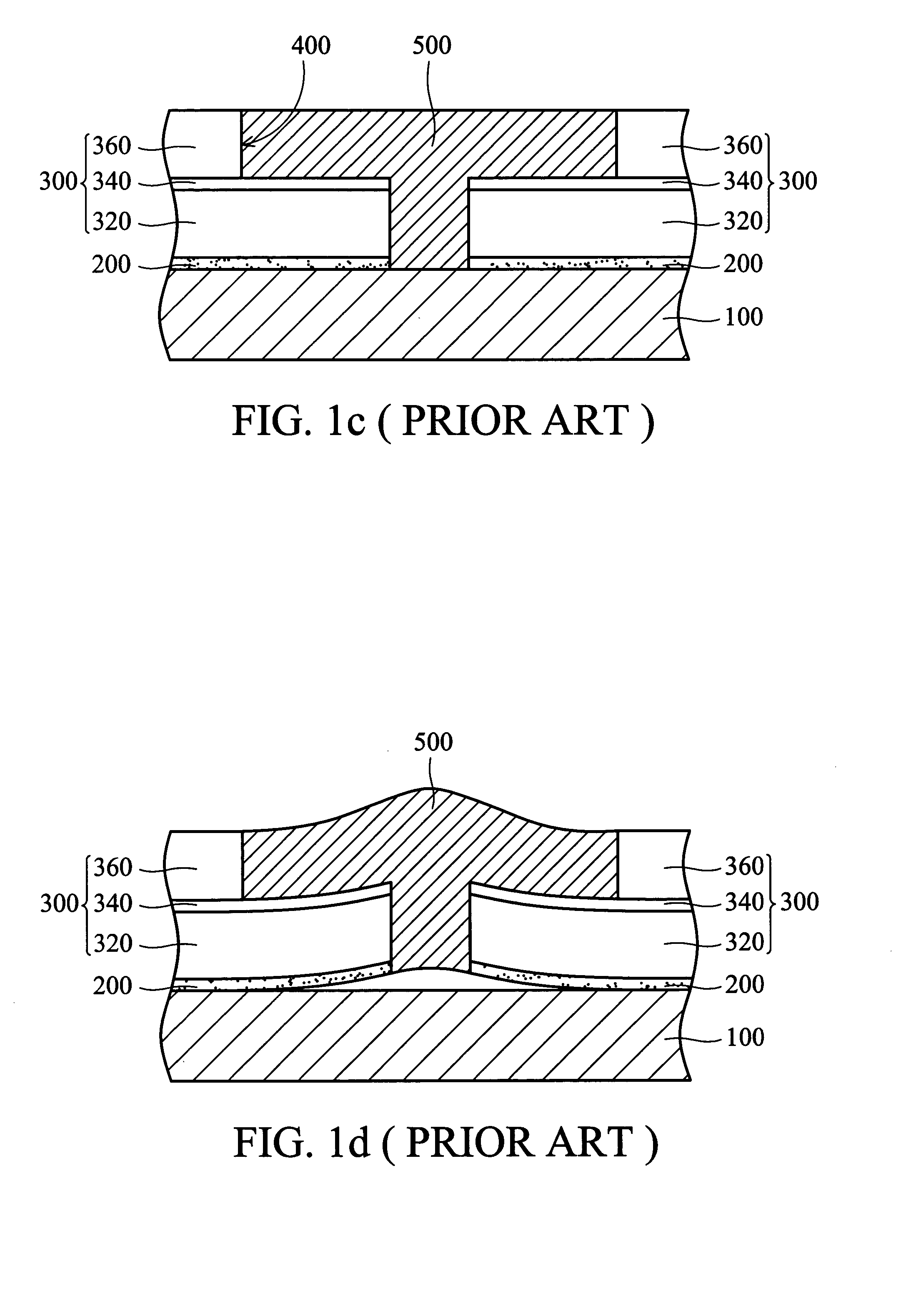Process for forming metal damascene structure to prevent dielectric layer peeling
- Summary
- Abstract
- Description
- Claims
- Application Information
AI Technical Summary
Benefits of technology
Problems solved by technology
Method used
Image
Examples
example
According to the above-mentioned process of the present invention, after the dielectric layer was etched to form a damascene opening, a plasma treatment using H2 / NH3 plasma was performed. Then, copper was filled in the damascene opening to complete metallization and obtain a testing structure shown in FIGS. 4a and 4b. The copper lines are capped by SiN cap layers (not shown).
FIG. 4a is a top view and FIG. 4b is a side view of the testing structure for electromigration (EM) and stress migration (SM). The testing structure includes four levels of metal. Symbol 61 indicates a metal line (the first level), and symbols 621 and 622 indicate metal pads (the second level), in which the pad 621 connects the metal line 61 via a plug 611 and the pad 622 connects the metal line 61 via a plug 612. Symbols 631 and 632 indicate metal pads (the third level), and symbol 64 indicates a metal line (the fourth level), in which the pad 631 connects the metal line 64 via a plug 633 and the pad 632 conn...
PUM
 Login to View More
Login to View More Abstract
Description
Claims
Application Information
 Login to View More
Login to View More - R&D
- Intellectual Property
- Life Sciences
- Materials
- Tech Scout
- Unparalleled Data Quality
- Higher Quality Content
- 60% Fewer Hallucinations
Browse by: Latest US Patents, China's latest patents, Technical Efficacy Thesaurus, Application Domain, Technology Topic, Popular Technical Reports.
© 2025 PatSnap. All rights reserved.Legal|Privacy policy|Modern Slavery Act Transparency Statement|Sitemap|About US| Contact US: help@patsnap.com



